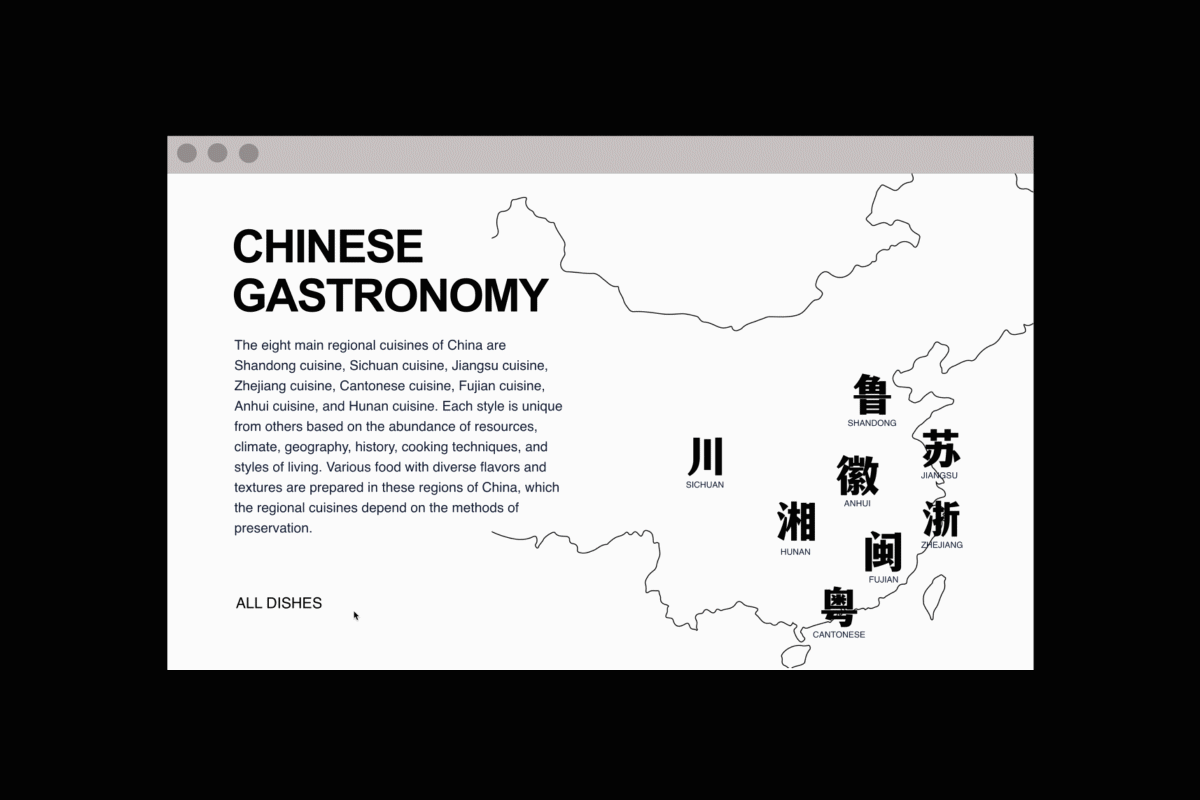Problem
Chinese cuisines are a significant part of Chinese culture, where major traditional cuisines embody the diverse flavors of the regions across the country. The main principle of Chinese cuisines highlights the color, smell, and taste of the food. On the contrary, overseas Chinese food is still portrayed as delicious but cheap fast food. Using the website as a format, I want to introduce Chinese food culture with the focus on the eight major regional cuisines: Cantonese, Sichuan, Jiangsu, Zhejiang, Fujian, Hunan Anhui, and Shandong. Western Chinese restaurants have adopted a Cantonese style due to most Chinese immigrants from Guangdong who moved to the United States and Europe in the 1800s. The diversity and the richness of the cuisines were lost, and a stereotyped menu formed that confused the Western customers about the authenticity of Chinese food.
Questions
How to introduce and provide access to authentic Chinese food for the American audience?
How to raise the status and elevate the impression of Chinese cuisine to spread across the United States?
How to visualize Chinese food throughout the regional cuisines?
How to raise the status and elevate the impression of Chinese cuisine to spread across the United States?
How to visualize Chinese food throughout the regional cuisines?
Experiment 1
It presents the research and analysis of these eight main regional cuisines through infographics. China is separated into North and South by the Qinling Mountains and Huaihe River, which flavors are salty oriented in the North, sweet in the South, spicy in the East, and acidic in the West. Till the end of the Qing Dynasty, Chinese food was commonly classified into the eight major regional cuisines based on the various climates, geographies, histories, eating habits, and cooking methods. However, there are other subdivisions of these culinary traditions, including Peking cuisines, Chinese Muslim cuisine, and Chaozhou cuisine. Each infographic depicts a single regional cuisine divided into three sections to form a gif. I addressed the main flavors of each cuisine through colors and shape sizes to distinguish and compare the characteristics of these cuisines.
![]()
![]()
![]()
![]()
![]()
![]()
![]()
![]()
![]()
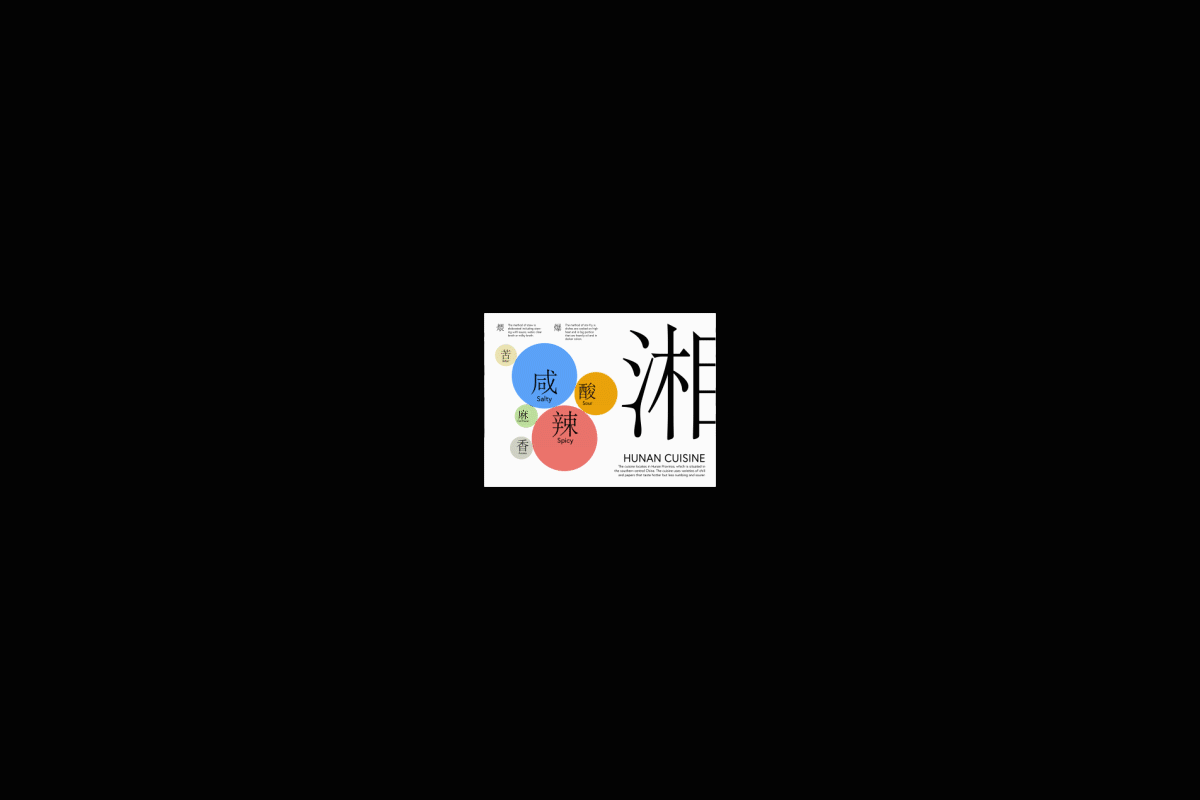
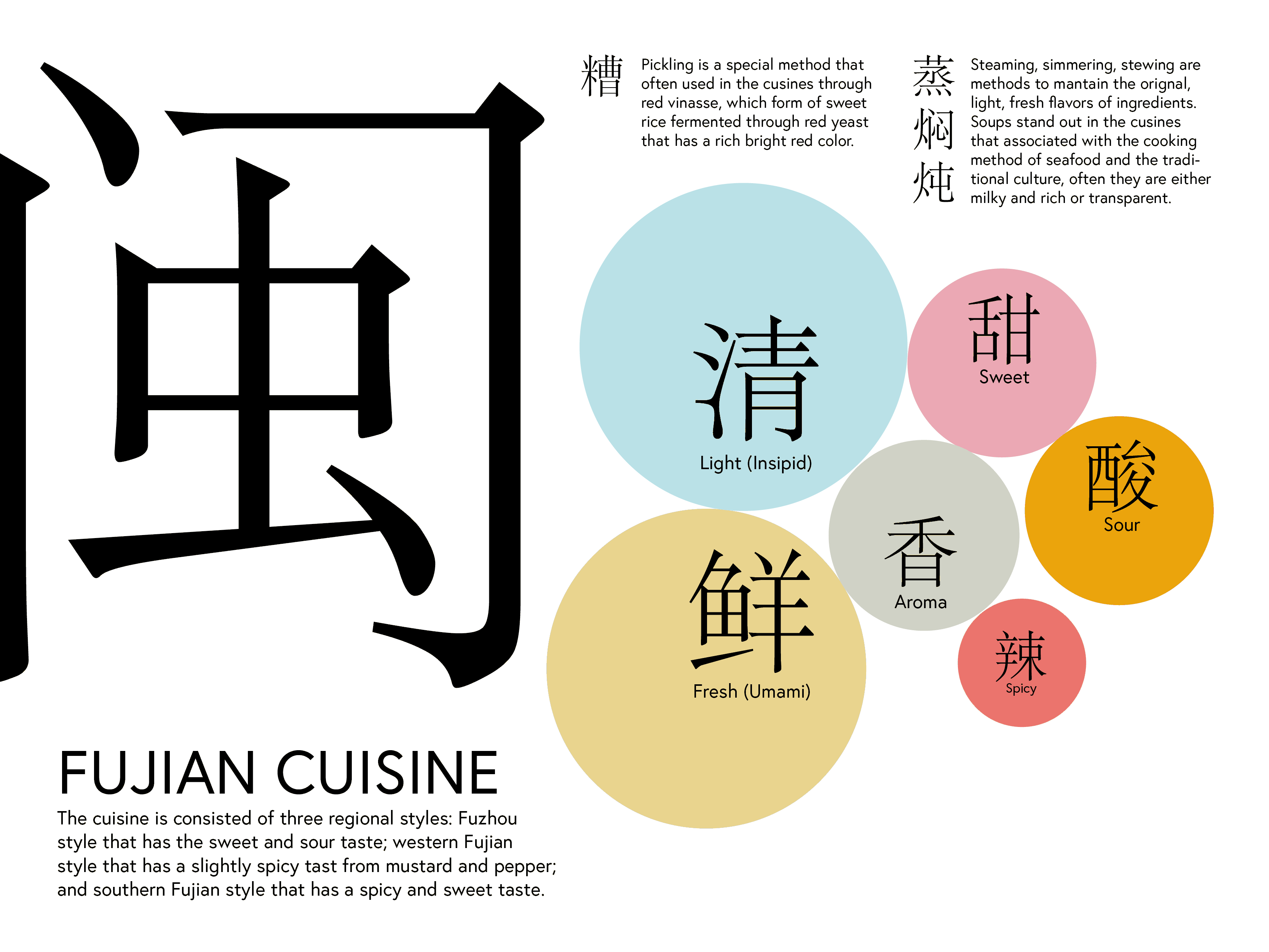
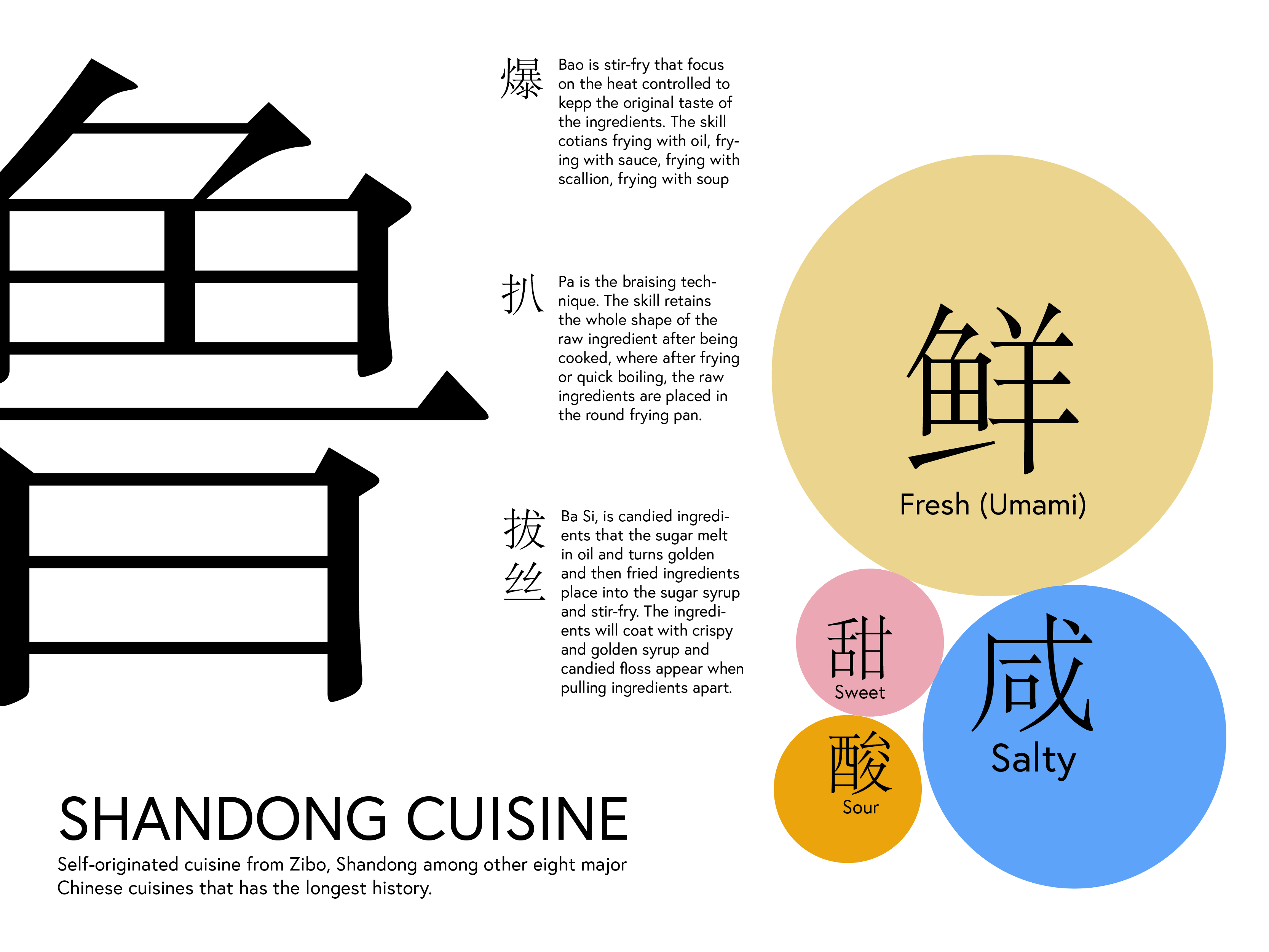
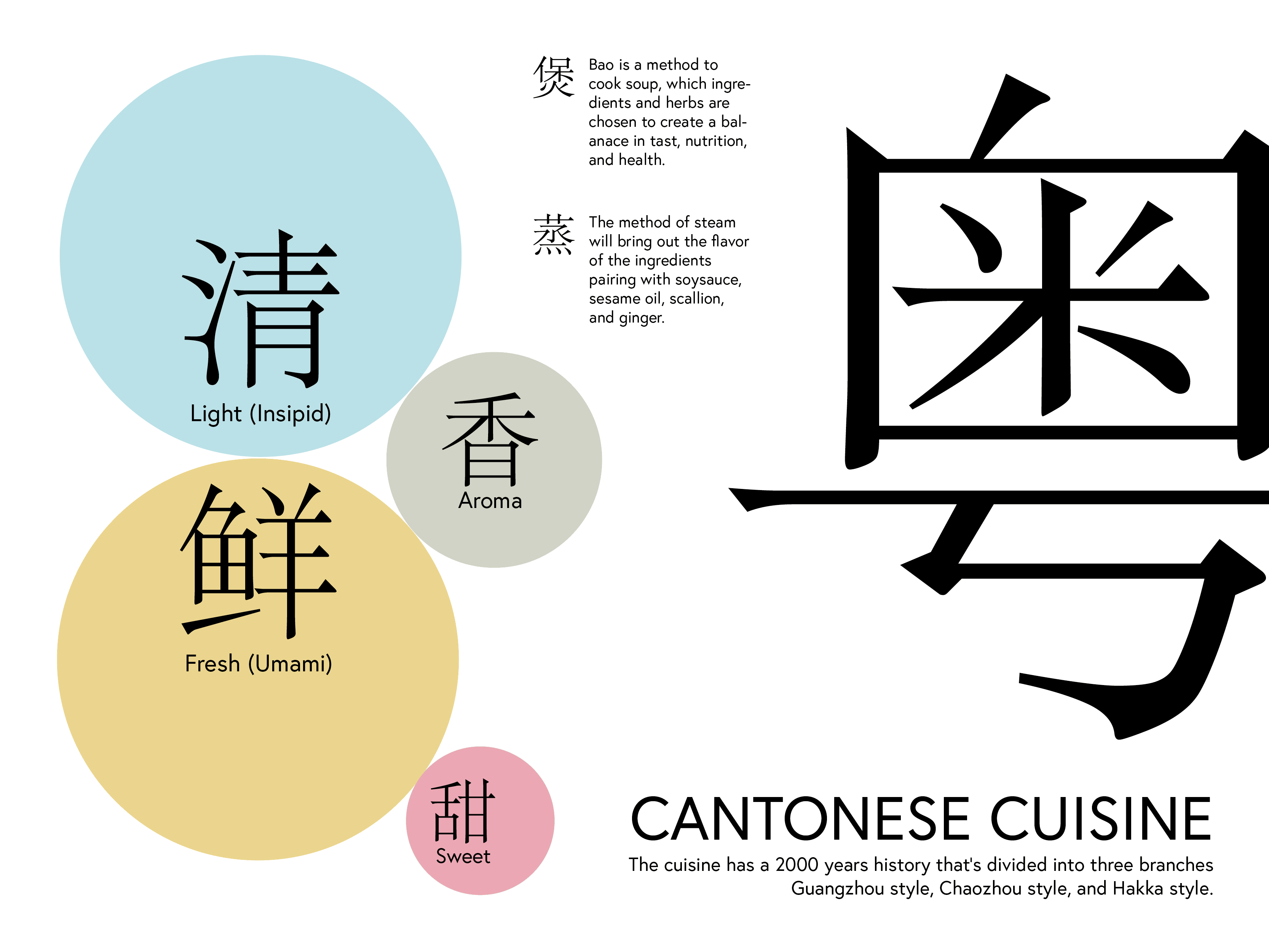
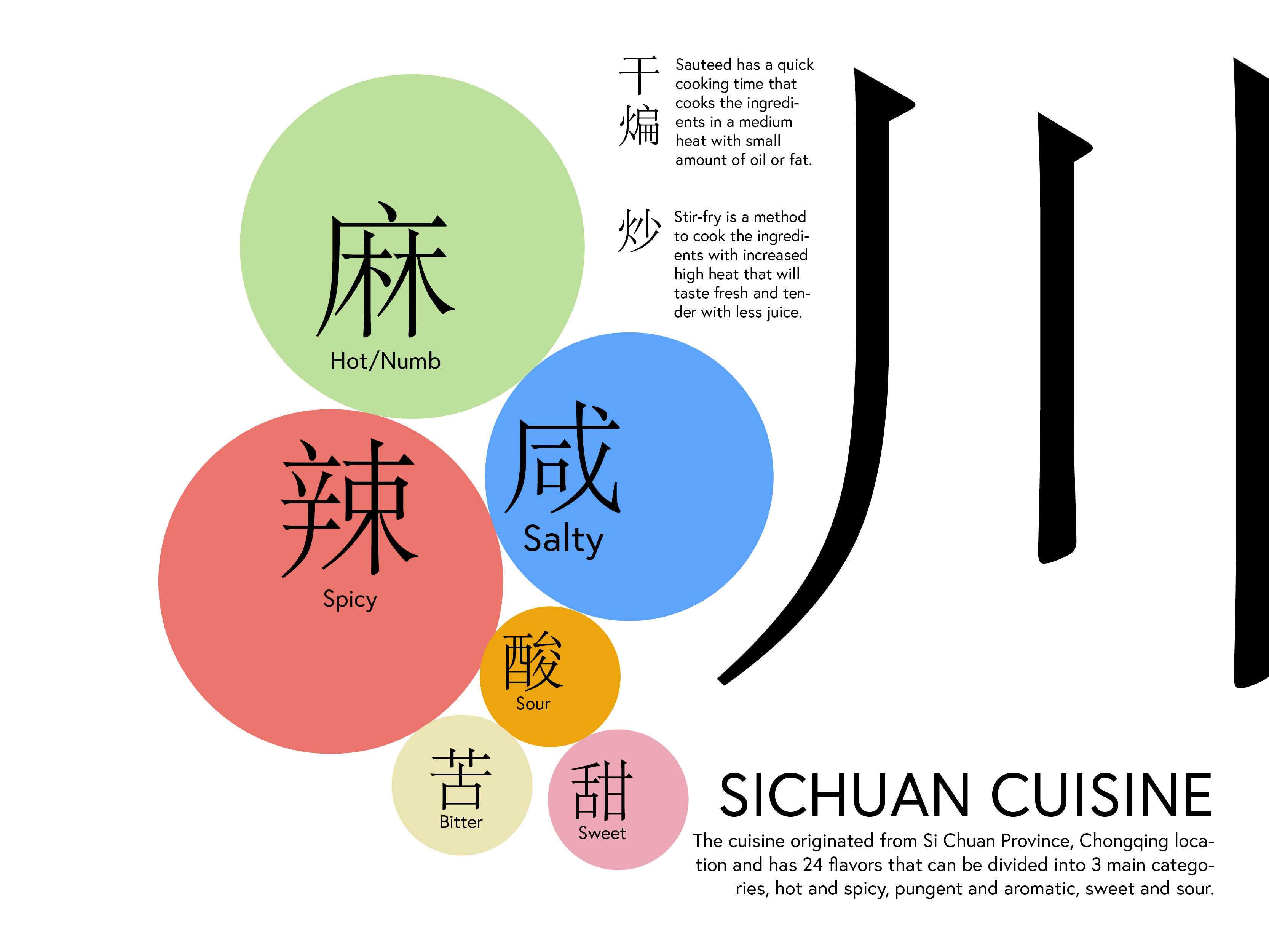
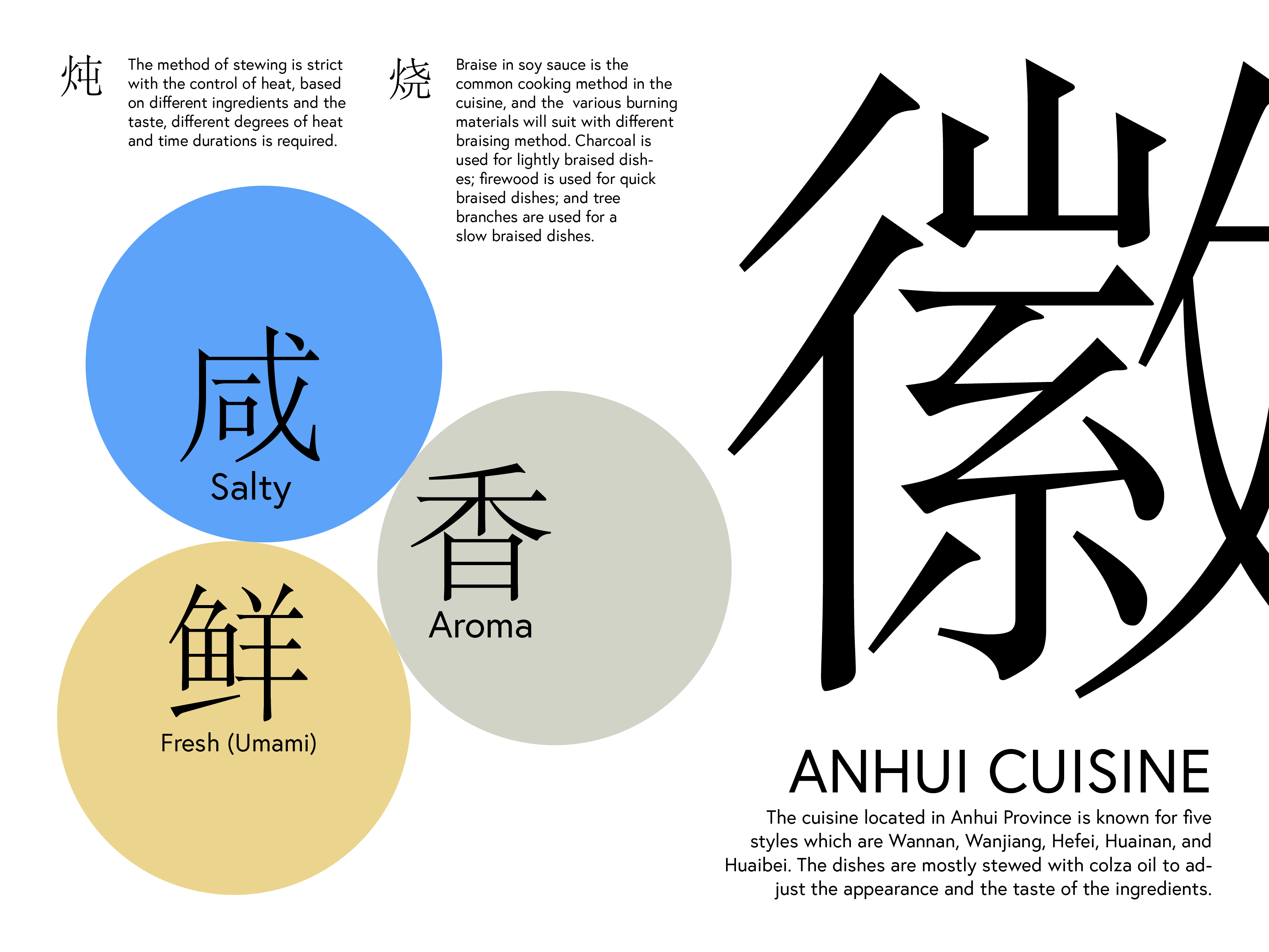
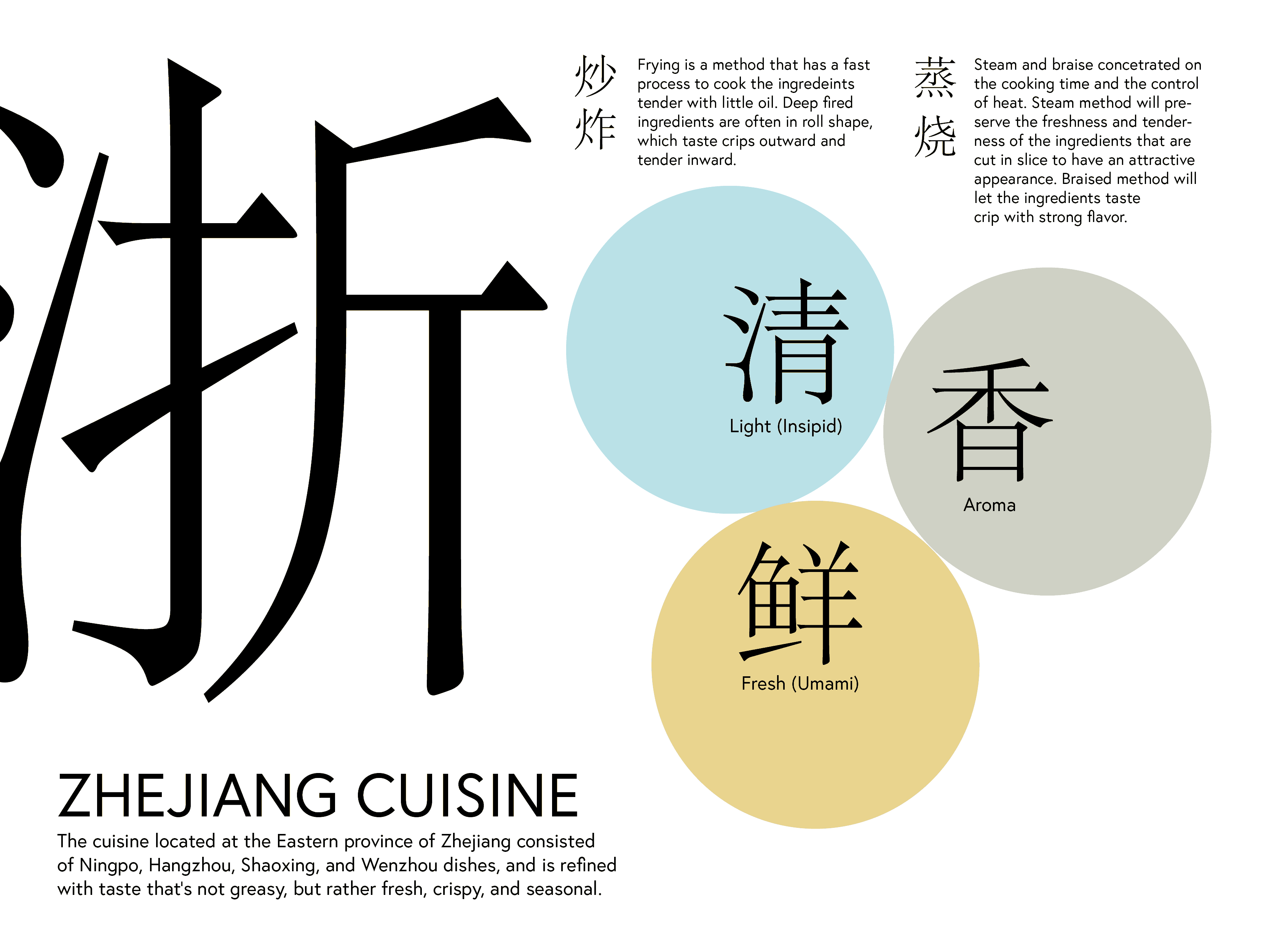

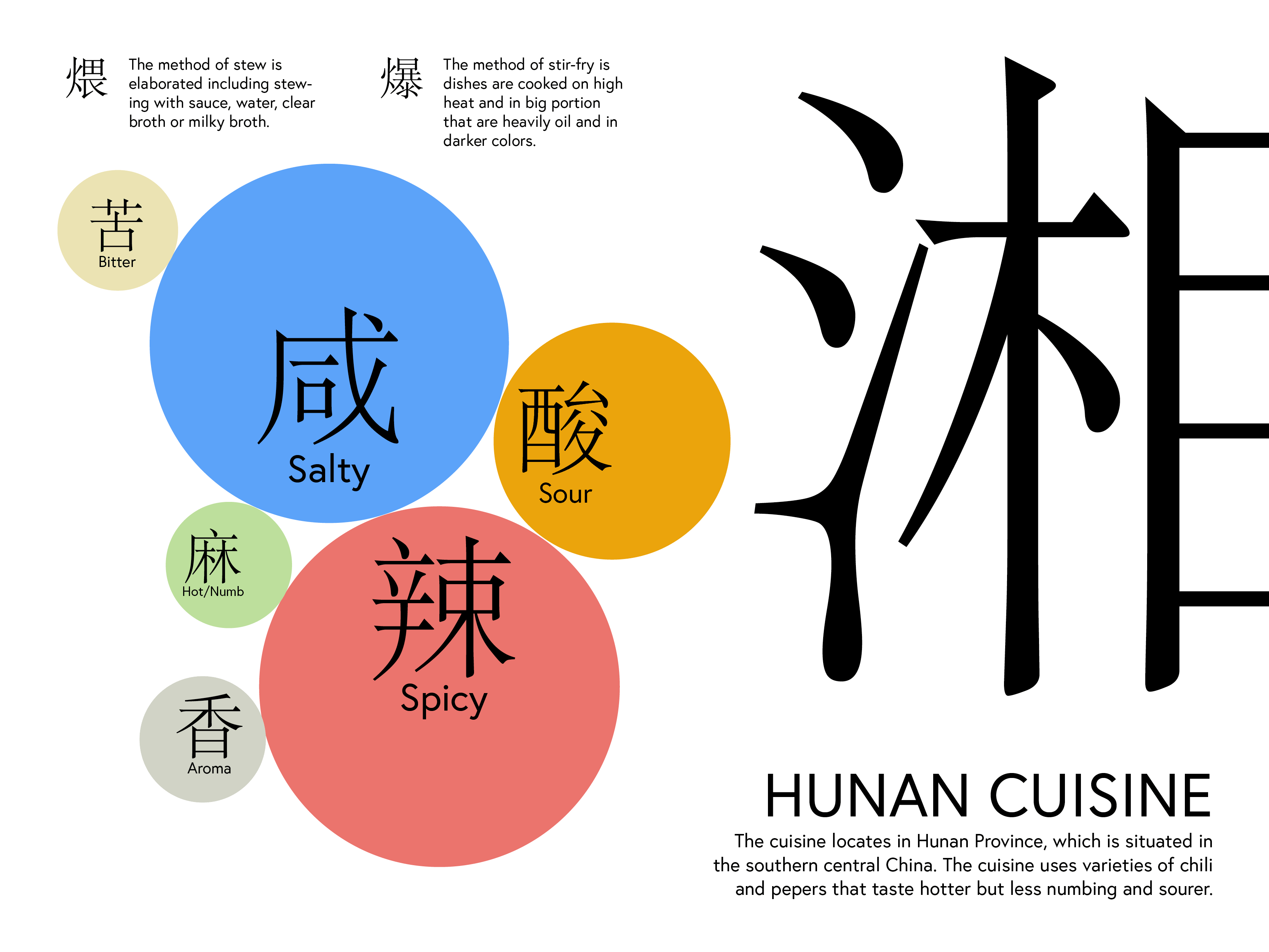
Experiment 2
I decided to create a platform to enlarge the accessibility and elevate the impression of Chinese food by visualizing the tastes of the eight regional cuisines for the American audience and English speakers. The visualization of the tastes of the dish has been designed within a 5 x 5 grid, with words explaining the flavors. At last, I reorganized the design layout, in which the Chinese name of the dish is located on the left corner with Chinese pinyin labeled under and a brief English description of the dish.
In the middle, it is a static version of the taste visualization where on the left, the main ingredients are listed, with minor ingredients and seasonings located below. On the right of the visual, the section that addresses the flavors of the dishes is divided into two-part, where the main flavors are in larger font size and have been portrayed through the motion visualization of the dish; below is the secondary tastes and textures are listed below.
Instead of designing all dishes with the same color palette, I extract colors that have been represented in the actual dish, which also matches the main ingredients used to characterize the tastes of the dish.
As you hover over the static visual, there will be a motion version that reproduces the dish's flavors lasting throughout the time.
Wireframe

The landing page, which on the right listed the range of flavors in Chinese cuisines. As you scroll down, there will be a map informing the geographic locations of each cuisine. As you hover over the characters, the highlighted color implies the major flavors established in the cuisine. There are four dishes picked to represent each regional cuisine. You also can access the dishes by clicking all dishes to see the overview of all. Each row is assigned to one cuisine, where four squares are symbolizing the four dishes; as you hover over one of the squares, it will display the dish's name in Chinese and English.
Click Here to visit Website Prototype
In the middle, it is a static version of the taste visualization where on the left, the main ingredients are listed, with minor ingredients and seasonings located below. On the right of the visual, the section that addresses the flavors of the dishes is divided into two-part, where the main flavors are in larger font size and have been portrayed through the motion visualization of the dish; below is the secondary tastes and textures are listed below.
Instead of designing all dishes with the same color palette, I extract colors that have been represented in the actual dish, which also matches the main ingredients used to characterize the tastes of the dish.
As you hover over the static visual, there will be a motion version that reproduces the dish's flavors lasting throughout the time.
Wireframe
The landing page, which on the right listed the range of flavors in Chinese cuisines. As you scroll down, there will be a map informing the geographic locations of each cuisine. As you hover over the characters, the highlighted color implies the major flavors established in the cuisine. There are four dishes picked to represent each regional cuisine. You also can access the dishes by clicking all dishes to see the overview of all. Each row is assigned to one cuisine, where four squares are symbolizing the four dishes; as you hover over one of the squares, it will display the dish's name in Chinese and English.
Click Here to visit Website Prototype
